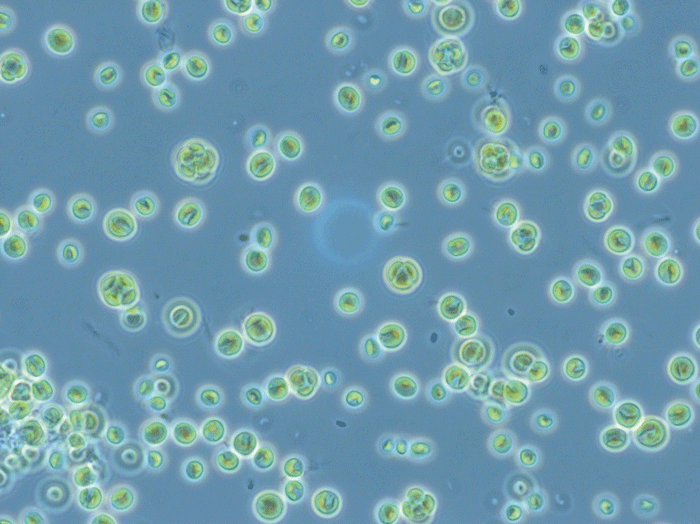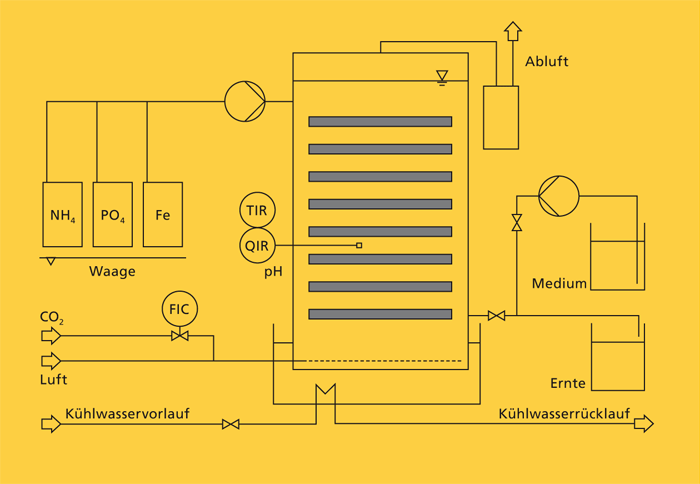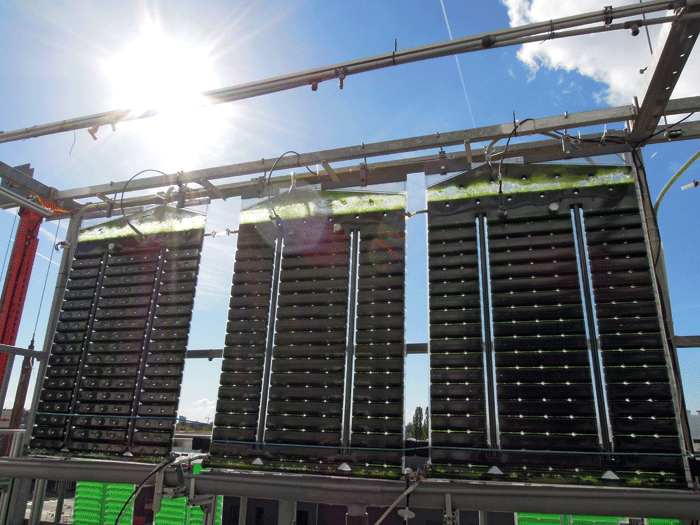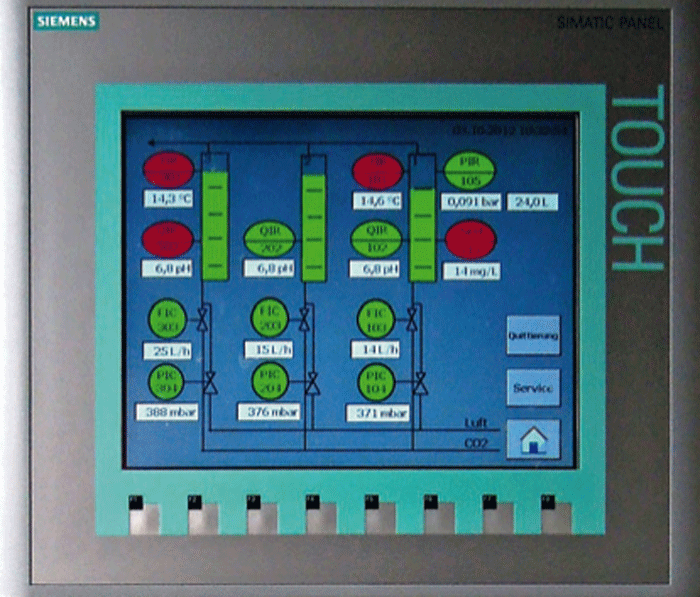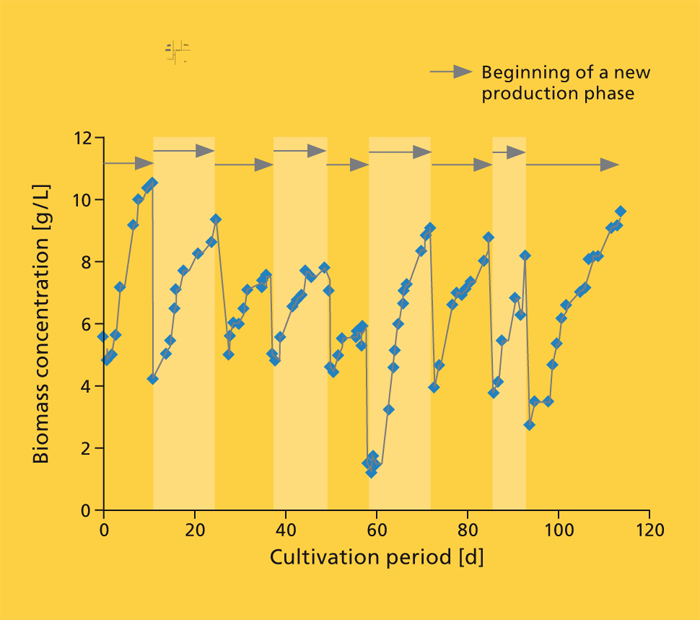Microalgae as a sustainable energy source
The production of biofuels on the basis of food crops or feed crops (e.g. biodiesel from rapeseed oil or palm oil) is in direct competition with food and feedstuff production. Producing second-generation biofuels with plants not used as food or feedstuffs, for example Jatropha, results in competition in terms of water consumption and cropland. Oil from microalgae is a potential alternative to plant biofuels and belongs to the third generation of biofuels. Compared with the cultivation of higher plants, the cultivation of microalgae offers numerous advantages. These include a higher yield per area, a reduced requirement for water and the possibility of growing microalgae on land that can not be used for agriculture. Oils produced by algae can be used as a biofuel, resulting waste gases fed back into the process and the residual biomass that remains is fermented to produce biogas. In order to convert the process to an industrial scale, we have developed a standardized process automation concept for the cultivation of microalgae.
 Fraunhofer Institute for Interfacial Engineering and Biotechnology IGB
Fraunhofer Institute for Interfacial Engineering and Biotechnology IGB